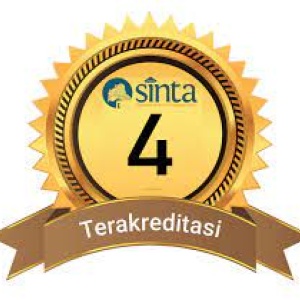Menapak Jejak Seni Gambuh dalam Naskah-Naskah Panji Melayu
DOI:
https://doi.org/10.37014/jumantara.v11i2.1004Keywords:
Surat Gambuh, Malay Manuscript, Malay Gambuh, Panji's StoryAbstract
Gambuh as the performing art in Malay area became one of the cultural transformation evidences of the close relation between Java and Malay. The history of gambuh performance in Malay area recorded in the archipelago's manuscripts, one of them is a manuscript entitled Surat Gambuh which is being the collection of Leiden University Library. This paper attempts to examine the contents of the manuscript in order to reconstruct the gambuh performance art in Malay and also trace the historical aspects. As far as the research had been done, there have been no studies of this manuscript so it is necessary to first transliterate it using a critical method. Furthermore, the historical aspects are explored using a historical approach by adding data from other texts of Panji. The analysis result of the reflection of Malay gambuh performance rules and historical aspects show that there is a transformation of work from oral tradition to written tradition, the cultural acculturation between Java and Malay, and the Islamic influence behind Malay gambuh.References
Naskah:
Surat Gambuh (Cod. Or. 1770) Koleksi Perpustakaan Universitas Leiden.
Hikayat Kelana Anakan (ML 507a) Koleksi Perpustakaan Nasional Republik Indonesia.
Buku, Jurnal, dan Kamus:
Ali, Lukman dan MS. Hutagalung. 1973. Hikayat Panji Kuda Semirang: Transkripsi. Jakarta: Departemen Pendidikan dan Kebudayaan, Direktorat Jendral Kebudayaan.
Amin, Rizali MD, dkk. 2017. "Komunikasi, Instrumentasi dan Seni Persembahan Gamelan Melayu dan Jawa." Jurnal Melayu. Isu Khas 2017: 272-288. ISSN 1675-7513.
Bandem, I Made. 1996. Evolusi Tari Bali. Yogyakarta: Kanisius.
Bandem, I Made. 2008. "Performing Arts of Indonesia: Performance Education and Archives" Makalah Presentasi dalam Pre-Conference of Society for Ethnomusicology at Wesleyan University, Middletown Connecticut, October 24-28, 2008.
Baried, Siti Baroroh; dkk. 1985. Pengantar Teori Filologi. Jakarta: Pusat Pembinaan dan Pengembangan Bahasa, Departemen Pendidikan dan Kebudayaan.
Chambert-Loir, Henri. 2014. "Sebuah Hikayat Dipentaskan" dalam Iskandar Zulkarnain, Dewa Mendu, Muhammad Bakir, dan Kawan-Kawan: Lima Belas Karangan Tentang Sastra Indonesia Lama. Jakarta: Kepustakaan Populer Gramedia dan EFEO.
Dewan Bahasa dan Pustaka. 1999. Daftar Ejaan Rumi Jawi. Kuala Lumpur: Dewan Bahasa dan Pustaka Malaysia
Fang, Liaw Yock. 2011. Sejarah Kesusastraan Melayu Klasik. Jakarta: Yayasan Pustaka Obor.
Iskandar, Teuku. 1999. Catalogue of Malay, Minangkabau, and South Sumatran Manuscripts in the Netherlands. Leiden: Universiteit Leiden, Faculteit der Godgeleerdheid, Documentatiebureau Islam-Christendom.
Juynboll, H. H. 1899. Catalogus van de Maleische en Sundaneesche Handschriften der Leidsche Universiteits-Bibliotheek. E. J. Brill.
Kaeh, Abdul Rahman. 1976. Hikayat Misa Taman Jayeng Kusuma. Kuala Lumpur: Dewan Bahasa dan Pustaka, Kementerian Pelajaran Malaysia.
Koster, Gijs L. 2018. "Ramayana and Mahabharata in Hikayat Misa Taman Jayeng Kusuma" dalam Traces of the Ramayana and Mahabharata in Javanese and Malay Literature. Singapore: ISEAS-Yusof Ishak Institute.
Mulyadi, Sri Wulan Rujiati. 1994. Kodikologi Melayu di Indonesia. Lembah Sastra. Depok: Fakultas Sastra, Universitas Indonesia.
Overbeck, H.O. 1932. "Eenige opmerkingen naar aanleiding van Over den oorsprong van het Javaansche tooneel, door Dr W.H. Rassers" Djawa 12: 11- 20.
Pijnappel, J. 1863. Maleisch-Nederduitsch Woordenboek. Amsterdam: Frederik Muller.
Pijnappel, J. 1875. Maleisch-Hollandsch Woordenboek. Amsterdam: Frederik Muller.
Purnomo, Priyo Joko. 2019. "Hikayat Kelana Anakan: Analisis Sosiologi Sastra Ian Watt" [skripsi]. Yogyakarta: Fakultas Ilmu Budaya, Universitas Gadjah Mada.
Ras, Johannes Jacobus; Siti Hawa Salleh. 1990. Hikayat Banjar. Kuala Lumpur: Dewan Bahasa dan Pustaka Kementerian Pendidikan Malaysia.
Ratna, Nyoman Kutha. 2013. Penelitian Sastra: Teori, Praktik, Metode, dan Teknik: Dari Strukturalisme hingga Poststrukturalisme (Perspektif Wacana Naratif). Yogyakarta: Pustaka Pelajar.
Sangidu. 2016. Tugas Filologi: Teori Dan Aplikasinya Dalam Naskah-Naskah Melayu. Yogyakarta: Gadjah Mada University Press dan Anggota IKAPI.
Sudibyo. 2015. Filologi: Sejarah, Metode, Dan Paradigma. Yogyakarta: Jurusan Sastra Indonesia, Fakultas Ilmu Budaya, Universitas Gadjah Mada dan Masyarakat Pernaskahan Nusantara Cabang Yogyakarta.
Sayuti, Husin. 1989. Pengantar Metodologi Riset. Jakarta: Fajar Agung.
Tim Penyusun. 2017. Kamus Besar Bahasa Indonesia Edisi V. Cetakan II. Jakarta: Badan Pengembangan dan Pembinaan Bahasa, Kementerian Pendidikan dan Kebudayaan.
Tol, Roger. 2019. "The Wonderful UNESCO Collection of Panji Tales in Leiden University Libraries." Wacana, 20 (1): 32-55. https://doi.org/10.17510/wacana.v20i1.746.
Vickers, Adrian. 2020. "Reconstructing the History of Panji Performances in Southeast Asia" Wacana 21 (2): 268-284. https://doi.org/10.17510/wacana.v21i2.897.
Wahyono, Ahmad Budi. 2018. Hikayat Panji Kuda Semirang: Alih Aksara. Jakarta: Perpustakaan Nasional Republik Indonesia.
Wilkinson R. J. 1901. Malay-English Dictionary. Singapore: Kelly and Walsh Limited.
Downloads
Published
Issue
Section
License
Copyright (c) 2020 Jumantara: Jurnal Manuskrip Nusantara

This work is licensed under a Creative Commons Attribution-ShareAlike 4.0 International License.
- This statement is the author's commitment to respect copyright, both in terms of citing other people's work and utilizing journal content. If necessary, the author can send an Authenticity Statement of Article stating that "this work is the author's original idea and has never been sent to another publisher and published in any publication"
- The author retains copyright.
- The moral rights of publication belong to the author.
- Formal legal aspects in the use of journal publications refer to the Creative Commons Attribution-ShareAlike 4.0 (CC BY-SA) license, which means that journal content can be used freely for any purpose.









